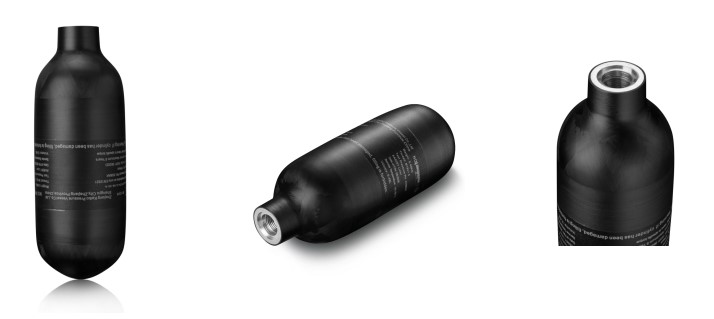The thrill of competition, the camaraderie of teammates, and the satisfying smack of a well-placed shot – airsoft and paintball offer a unique blend of strategy and action. But for those new to the scene, the sheer amount of equipment and its intricacies can be daunting. Two crucial elements that significantly impact your gameplay are your gas tank and the propellant you choose – CO2 or HPA (High-Pressure Air). Understanding how these systems react to temperature and implementing proper maintenance practices are key to maximizing performance, safety, and ultimately, your enjoyment on the field.
Decoding the Dance Between Temperature and Performance
The physics of gases play a central role in how your marker functions. CO2, a popular and readily available propellant, is highly sensitive to temperature fluctuations. As the temperature rises, CO2 expands, causing a rise in pressure within the tank. This translates to increased muzzle velocity – potentially desirable for a bit more power behind your shots. However, this is a double-edged sword. Inconsistent pressure spikes can lead to unpredictable shot patterns, hindering accuracy, and in extreme cases, even damage your marker if the pressure exceeds its design limits. Conversely, colder environments have the opposite effect. CO2 contracts, reducing pressure and consequently, the power and consistency of your shots.
HPA systems, on the other hand, offer a more stable experience across a wider temperature range. These systems utilize compressed air stored in a tank at high pressures, typically around 4,500 psi. Air, by nature, is less susceptible to temperature-induced pressure changes compared to CO2. This translates to a more consistent performance regardless of the weather conditions. However, it’s important to remember that even HPA systems can experience some variance in extreme temperatures. This is due to changes in air density, but the impact is generally less pronounced compared to the dramatic shifts experienced with CO2.
Choosing the Right Propellant for Your Playstyle
The ideal propellant choice boils down to your individual needs and preferences. Here’s a breakdown to help you decide:
-CO2: The Easy Starter
a.Affordable and readily available
b.Offers a quick and easy setup
c.Can provide a slight power boost in warmer temperatures
-Drawbacks of CO2:
a.Highly temperature sensitive, leading to inconsistent performance
b.Can cause liquid CO2 to discharge (CO2 freeze), potentially damaging your marker
c.Requires more frequent refilling due to lower gas capacity per fill
-HPA: The Performance Champion
-Offers superior consistency and accuracy across a wider temperature range
-More efficient gas usage, leading to fewer refills
-Allows for adjustability through regulators, enabling fine-tuning for optimal performance
-Drawbacks of HPA:
-Requires an additional investment in an HPA tank and regulator system
-Initial setup can be more complex compared to CO2
-HPA tanks are typically heavier than CO2 tanks
Maintaining Your Gear for Peak Performance and Safety
Just like any piece of equipment, proper care and maintenance of your gas tanks are essential for optimal performance and safety. Here are some key practices to follow:
-Regular Inspections: Develop a habit of inspecting your tanks before and after each use. Look for signs of wear, corrosion, or damage, paying particular attention to the o-rings. These rubber seals ensure a proper seal and should be replaced if they appear dry, cracked, or worn.
-Hydrostatic Testing: Both CO2 and HPA tanks require periodic hydrostatic testing, typically every five years, to ensure they can safely hold pressurized gas. This non-destructive test identifies any weaknesses in the tank’s structure. Always adhere to the recommended testing schedule as mandated by local regulations and the manufacturer’s specifications.
-Storage Matters: When not in use, store your gas tanks in a cool, dry, and well-ventilated area. Avoid direct sunlight and extreme temperatures, as this can cause internal pressure fluctuations that could weaken the tank over time.
-Don’t Overfill: Overfilling a gas tank, especially a CO2 tank, can be dangerous. As temperatures rise, the gas expands, and exceeding the tank’s capacity limit can lead to excessive pressure and potential ruptures. Always fill your tank according to the manufacturer’s instructions.
-Invest in Protection: Consider purchasing a protective cover or sleeve for your tank. This adds a layer of shielding against impacts and scratches that could compromise the tank’s integrity.
-Keep it Clean: Maintain the exterior of your tank by regularly wiping away dirt, paint, and debris. A clean tank is easier to inspect and ensures a good connection with your marker. Avoid using harsh chemicals that could damage the tank or affect the o-rings.
Post time: Jul-10-2024

